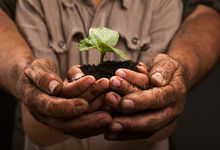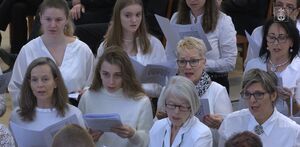Gratitude: the power that produces fruit
It sounds menacing: those who don’t bear any fruit will be cut down. However, the parable of the barren fig tree is not a threatening message, but a message of joy. Anyone who digs deep enough will discover how the Bible interprets itself.

Sometimes it’s enough to make you want to pull your hair out. You have a problem and a friend or your partner has the solution, but their words just don’t seem to get through to you. And then along comes someone else, says the exact same thing with different words, and bingo!
This is what the parable of the fig tree, which appears only in Luke, is all about. The tree (man) yields no fruit. The owner (God the Father) wants to get rid of it. But the gardener (Jesus Christ) gives it another chance and some tender loving care.
This much we can gather from Luke 13: 6–9, but somehow it does not fit into the overall context.
Vaguely embedded in the context?
The verses before the parable speak about the massacre of some Galileans and an accident at the pool of Siloam, which was Jerusalem’s water reservoir. There is also talk about the call to repentance and the question that Job had already despaired over: Are sinners to blame for their own misfortune?
The verses following the parable deal with the healing of a crippled woman on the Sabbath. We also read of a quarrel with the synagogue leaders about the alleged violation of the law. And there is talk about Jesus' authority in His miracles.
And in the middle of it all, a fig tree that did not root properly. This is what one might think until one follows a cross-reference.
The same thing in other words
John 9: the healing of a man born blind. The chapter plays in Siloam and raises the question of suffering and guilt. And it deals with missed and seized opportunities for repentance.
The incident takes place on a Sabbath. There is a fight with the Pharisees because the Sabbath has been broken. In the end, Christ professes His authority as Messiah and the blind man his faith in Jesus.
And then there are still these other words: “The works of God should be revealed in him,” the blind sinner. Bingo!…
The significance today
The healing of the man born blind explains the parable of the fig tree in its context:
- Each one of us is spiritually crippled and blind.
- It corresponds with God’s creative will that we develop and rise above these conditions.
- The strength we need for this comes from the loving and sacrificial acts of Jesus Christ.
- To bear fruit does not mean that we should produce some kind of achievement, but simply to make known and share with others what we experience with our God.
From attitude to action
How one’s actions change when one changes one’s attitude in this way. This is described by John the Baptist, who warns: “And even now the ax is laid to the root of the trees.” In Luke 3, he mentions as fruits of repentance:
- “He who has two tunics, let him give to him who has none.”
- “Collect no more than what is appointed for you.”
- “Do not intimidate anyone or accuse falsely.”
But not because some Pharisees wanted to make it a law, but because we want to share the good we ourselves have experienced. And driven by gratitude that also culminated in the healing of the crippled woman: “And all the multitude rejoiced for all the glorious things that were done by Him.”
Photo: tiagozr - stock.adobe.com
















